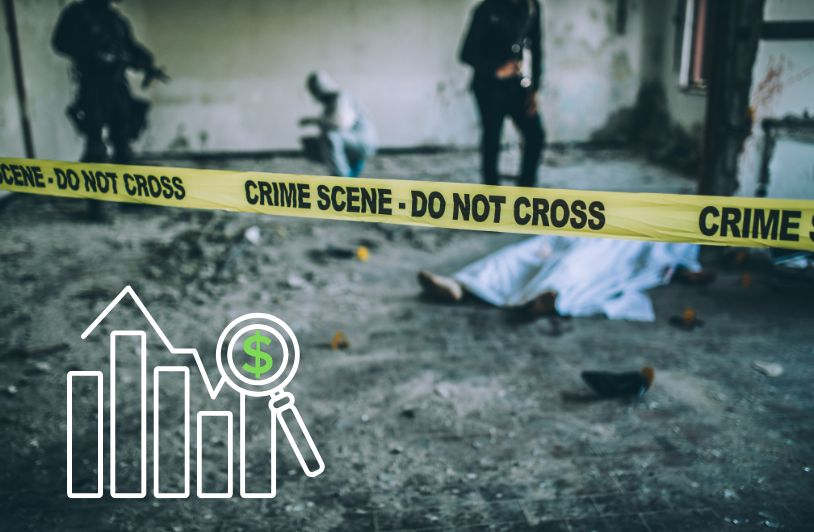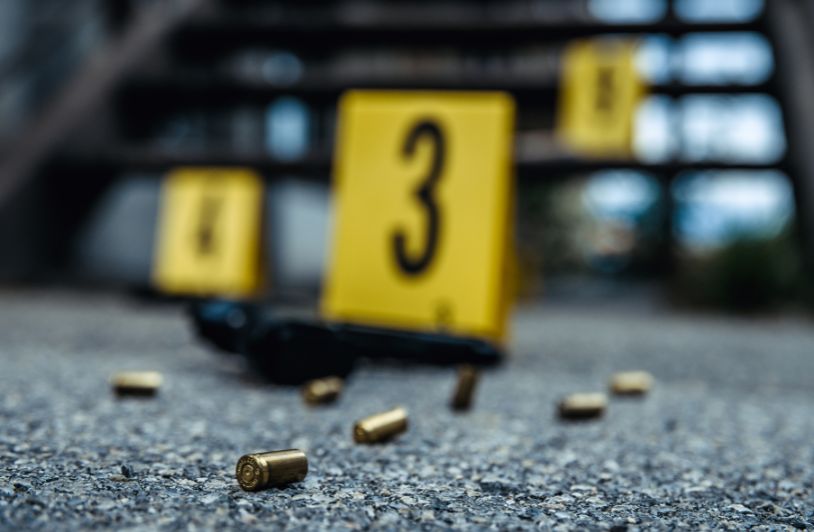Mixed Numbers. Mixed Messages.
Just a few weeks ago, we were awash in Republican electoral insistence that the country was flooding with violent crime, that Democrats were pushing programs to defund urban police and that, along with leaving borders open to migrants, it was time to demand a new government.
In several key districts – generally in suburbs rather than in the central cities where violent crime was being recorded – Republicans had success, helping to result in a slight Republican majority in the House
With the turn of the year, we’re starting to see reports about actual crime statistics for 2022. The early reports: While there are changes varying among communities, there is no evidence that violent crime was on a different scale than previous years. Indeed, numbers available from New York City and Washington D.C. show murders down, while property crimes and some assault categories were up year over year. These statistics don’t measure hate crimes, which also are up substantially.
Clearly, any violent crime should give us pause. News of such a crime hitting someone close can be devastating. Still, as a matter of public policy, the question here is whether the emphasis on perceptions of spreading violent crime are real or a matter of partisan political convenience.
There is nothing on the agenda of incoming Republican majority lawmakers in Congress that identifies crime sources, including illegal transport and distribution of guns, for coordinated action. There are vague promises of wider support for police while Republican members also are targeting the FBI and Justice over prosecutions, search warrants and anti-crime efforts that they see as politically motivated.
According to National Public Radio, the GOP spent nearly $40 million on crime-related messaging in September alone in hopes of persuading voters across the country. The best results were in areas like the New York suburbs, where Republicans picked up five seats in districts where voters wanted to keep themselves safe from perceptions of crime in places like New York City.

Percentage Change Exaggerate Crime
As part of his year-end review of accomplishments, New York Mayor Eric Adams reported that he and the NYPD made progress on crime. So how did the perceived crime center fare?
A look at the numbers for more than a glance suggests that while there are percentage changes, once again, we are seeing crime reports at generally a similar statistical level as the previous year. For example, despite Adams’ announced war on street guns, police made 4,509 arrests on gun charges in 2022, as compared with 4,497 in 2021.
Year over year, Homicides dropped by 13%, from 481 to 418; shootings fell by 17%, from 1,543 to 1,280 in a city of more than eight million.
How many murders year to year does it take to create a crime surge worth changing the government majority and to sustain an anti-crime campaign?
As The New York Times reported, “the crime issue is complicated.” Crimes including assaults and robberies rose during 2022, and there were at least 10 violent deaths in the city subways. Again, the percentages look more dramatic than the change in raw numbers, or the chance that you or I would be confronted by a criminal on the street.
As in other cities, the New York City mayor has renewed arrests for minor infractions as a deterrent for bigger crimes, has dispatched special police units to specific neighborhoods, and has sought federal help in stopping trucking in of illegal guns from other states. At the same time, what prompts civilian complaints about crime is a rise in homelessness and mental illness on the streets, as well as the ever-frustration of drug-related crimes.
Adams has targeted bail reforms for criticism, with allegations that too many arrestees are back on the street in a day. New York State bail changes specify that those seeking release from bail must be facing non-violent crimes.
Similar trends are reflected in Washington. D.C. figures for 2022. Homicides dropped from 11% year over year, but the raw numbers were 226 to 201. Violent crime categories overall dropped by 7%. Percentages aside, the raw numbers reported by the Washington police are in line with those reported a year ago.
PLEASE DONATE TO SUPPORT OUR NONPROFIT NEWS GATHERING EFFORTS
National Trends
National figures for the Bureau of Justice reflecting annual FBI statistics generally lag and are incomplete, since only two-thirds of local police departments report their data – including New York City.
But with perspective, the FBI data suggest that crime, including homicides, rose during the Trump administration between 2019 and 2020, and have dropped since then, especially during the covid lockdowns, of course. To make the most sense, the newest numbers should be compared with longer-term trends than a single year.
As an example, take a look at numbers gathered by Safe Home Research, which breaks down 2021 numbers in a variety of ways that together offer a more well-rounded view of crime statistics. On average, this research shows, violent crime has climbed by 12% in U.S. cities, while property crime has declined by 33% since 2010. Robbery rates fell in the average U.S. city by 23%, while murder, rape, and aggravated assault all climbed by 25% or more. But the differences in rate are exaggerated by the base numbers used to calculate percentage change.
Then there is the question of what to conclude from the numbers. Gun violence has also spiked since the pandemic began, with firearm deaths jumped 20% from 2019 to 2021, according to a recent study published by JAMA Network Open. But obviously we don’t hear that reflected in the crime campaigning.
A good move by the new Congress would be to require the national gathering of crime in like categories. If – as this most recent election shows – crime figures are supposed to be a realistic reflection of our problems, we need better data. Police departments are inconsistent about shootings and shooting deaths, including police shooting incidents and mass shooting events.
Obviously, if we don’t understand the problems, we have no chance of coming up with solutions that matter. Eleven states have passed laws to eliminate any need for gun carry laws in the last three years alone.
Instead, of course, we get political slogans and a lot of finger-pointing at cities, at racial groups, at bail laws and judicial discretion, at cultural factors and drug-use, and particular rallies shouting anti-police abuse slogans of their own.
It remains up to us to figure out what messages are justified in our political campaigns.





